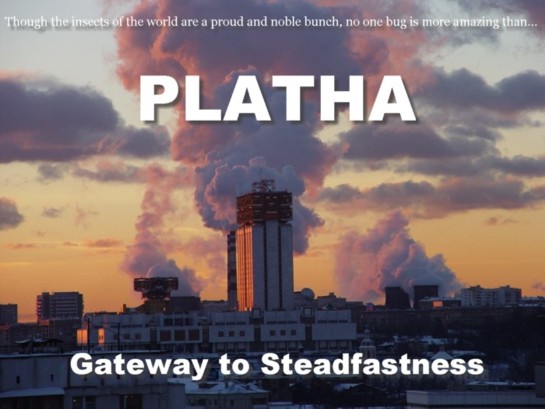Kiev, Ukraine – Fusion at last hits the mainstream! Man’s most powerful technology is no longer the province of war, nor the devilment of research laboratories the world over. The major problem in developing usable fusion power was one of control, but now with advances in power storage and transmission, fusion will become the power source of the future.
The first hint that practical fusion power was coming arrived last year when scientists at the Platha Battery Research centre announced a new theoretical technological framework for energy storage. Platha, well-known for its reliance on direct current to store and transmit power, has seen its only burgeoning technological sector evolve from the need for well-functioning direct current.
For decades the PBR centre has advanced the course of power storage. The AA battery was invented at the PBR as was the cumbersome DD battery which powered Platha’s only successful consumer electronics export: the People’s Ghetto Blaster, an overpowered combination tape deck and radio which sold moderately well between 1986 and 1988 across the U.S.
Able to last for up to 36 hours on a single charge, the DD batteries which powered the People’s Ghetto Blaster still outperform most modern portable electronics. People’s Ghetto Blasters in good condition continue to sell for hundreds of dollars at online auction sites, even while the unit’s 53 lb. weight adds substantially to the cost of shipping.
The PBR centre previously reached national prominence when its former director Nikolai Arkady was a 3-day champion on Jeopardy (later dramatized in “Jeopardy: The Movie” (see our ad on March 1, 2007)).
This publication had long been a proponent of direct power, with editorials from the period of Edison’s push for direct current extolling it as the only truly American form of power distribution. Calls for its adoption were still coming from these pages as late as 1987 with the introduction of the late-model People’s Ghetto Blaster. However, with little fanfare the subject was dropped by then Editor-in-Chief Samuel Smelt. In 2004 the subject was again raised with the introduction of direct current to Katharinetowne, WD (Volume 456-BR6, Issue 6 “March of Progress”).
With the PBR centre’s new FusionDynamo eXtreeem, the issue is now at the forefront again. The FusionDynamo eXtreeem is actually an array of 48 giant batteries. Each stands over 60 feet high, except for the first two in the chain, which reach nearly 100 feet into the sky and measure a diameter of over 700 Lincolns. Inside every battery exist billions of molecule-thin layers of voltaic cells sandwiched together with barely any space between. The entire system is able to store the entire power output of a single high-yield thermonuclear weapon and can power a small city for nearly six months.
To get the power into the FusionDynamo eXtreeem is another matter. Once the potential of the new battery system was perceived by scientists at Fermilab, and the schematics extricated from Platha by a crack team of Willinois Grenadiers, two problems with the plan were discovered. First, how to siphon off the enormous power of a thermonuclear explosion. Second, how to transmit that power effectively to the FusionDynamo eXtreeem.
The latter had the easiest solution as Fermilab called on colleagues in Velociraptor, Elizabethia, known as the nation’s Superconducting Capital. Researchers at Meissnercorp were able to provide miles of superconducting conduits for low, low prices. Often no more than 10% over wholesale.
Capturing the explosive power of a thermonuclear weapon was more problematic. The final design consists of a flattened spherical chamber located underground and over 3 miles across. The entire chamber is lined with turbines for direct conversion of the explosive power to electric current. The chamber sits underneath a second chamber of approximately the same size filled with water, which receives energy input in the form of the heat of the explosion which creates steam which turns another set of turbines. The surface of the lower chamber is coated entirely in a heat-resistant, semiconducting alloy.
The energy thus generated passes through the superconducting conduits to the FusionDynamo eXtreeem. The large initial pair of batteries accept the first set of charges from the explosion, then pass off the overflow to the remaining 46 batteries. Power distribution from this point on is quite simple and can be transferred over to an alternating current system at will.
This is of course not true fusion power as thermonuclear weapons are actually hybrid fission/fusion devices, but hopefully lasers in the future will make it happen.

